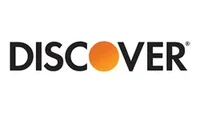Emergency and payday loan alternatives that could save you money




Key takeaways
- Payday loans are a form of predatory lending with exorbitant interest rates and short repayment periods, making them a risky option for emergency cash.
- There are safer alternatives to payday loans, such as taking out a personal loan, getting help from nonprofits and charities or opening a 0% APR credit card.
- Borrowing from your 401(k) or using a home equity loan are options, but they come with risks and should be carefully considered.
Whether it’s an unexpected trip to the doctor or an ill-timed vehicle repair, sometimes you may find yourself in need of cash. While payday loans, often marketed as emergency loans, may seem tempting, they are a form of predatory lending. Their exorbitant interest rates often trap borrowers in a cycle of debt for years. You should always explore safer, less expensive payday loan alternatives before turning to payday loans.
Payday loan alternatives worth trying
Even borrowers with bad credit have options that are safer and easier to repay.
1. Take out a personal loan
Best for those with good credit (or a cosigner) and a stable income.
Personal loans can be used for almost anything, including buying groceries or paying bills if you’re in a financial pinch. A credit score of about 700 should qualify you for an annual percentage rate of around 12 percent. You can take out a personal loan with bad credit, but you will likely receive a much higher rate — up to 36 percent — on an unsecured loan.
Unlike with a payday loan, you will have at least a year to repay what you borrowed. However, you’ll have to watch out for origination fees, which (if your lender charges one) can reduce how much cash you actually receive. Consider the pros and cons of personal loans carefully before deciding if this is the right option for you.
Here are a few unsecured personal loans that Bankrate’s experts think are worthwhile emergency and payday loan alternatives.
| APR range | Loan amounts | Repayment terms | Min. credit score | |
| Upstart | 6.60–35.99 | $1,000–$50,000 | 36–60 months | No Requirement |
| Best Egg | 6.99–35.99 | $2,000–$50,000 | 36–60 months | 600 |
| Upgrade | 7.99–35.99 | $1,000–$50,000 | 24–84 months | 580 |
| Discover | 7.99–24.99 | $2,500–$40,000 | 36–84 months | 660 |

Upstart
-
Upstart is an online lender offering fast funding and low minimum borrowing amounts. Its low starting APR bests many of its competitors, while its lack of a credit score requirement makes it accessible for borrowers with no credit or poor credit.

Best Egg
-
Best Egg is a good option for fair credit borrowers because it offers both secured and unsecured loans. Its origination fees are as low as 0.99 percent — lower than some competitors — meaning you can use more of the cash you borrow. However, its minimum borrowing amount is higher.

Upgrade
-
Upgrade is an online lender offering a low minimum borrowing amount with flexible repayment terms. Unlike many lenders, it welcomes joint applications. A cosigner or co-borrower with better credit than yours could help you qualify for a greater amount or better terms.

Discover
-
While better known for its credit cards, Discover’s personal loans offer a competitive rate and high maximum borrowing amount for borrowers with good credit. Borrowers can choose from a range of repayment terms and are not charged an origination fee.
It depends on the lender. In some cases, you’ll receive funds the same day. With other lenders, it could take up to five business days.
2. Get help from nonprofits and charities
Best for those who can meet an organization’s qualifications to receive assistance.
Financial assistance from a nonprofit or charity does not have to be repaid. Funds are typically reserved for certain groups, such as older or unemployed people, or those with disabilities or chronic illnesses. Some aid groups offer both financial assistance and other benefits, like job training, education, workshops or mentoring. Depending on the organization, you may be required to participate in these offerings to qualify for help.
This depends on the organization. Sometimes, there may be a weeks- or months-long wait list for help.
3. Reduce your expenses
Best for those trying to change their financial habits
Cutting costs frees up more money to cover emergency expenses or build an emergency fund, so you may not need a payday loan alternative at all. You may find it easier to find spare cash if you create and follow a budget and develop a strategy for managing your debt. Building credit will also make borrowing money in an emergency easier and more affordable.
Covering the basics
- How to make a zero-based budget: Keeping track of every dollar can help you take control of your spending and better manage variable expenses.
- 8 ways to stretch your paycheck further: Discover tips for cutting costs, avoiding temptation and finding cheaper alternatives to everyday expenses.
- How to start saving (even if you’re starting from scratch): From building a budget to setting up savings accounts, learn how to start a savings habit that will stick.
Managing debt
- Effective strategies and tips to pay off debt: Having a clear plan is the first step to paying off debt. Learn about the most common debt reduction strategies.
- 7 tips to help dig your way out of debt: From altering spending habits to making extra payments, here are tips to help you reduce your debt faster.
- How to get debt relief: Learn how to get help for overwhelming debt.
Building credit
- Why is good credit so important? Your credit score affects whether you qualify for loans and what rates you receive, but its impact reaches well beyond just borrowing money.
- What is a good credit score? Learn what goes into your credit score, how it’s calculated and what your credit score number means.
- How to repair your credit in 5 steps: Learn how to check your credit score and what actions to take to improve it.

Reduce your medical bills
Sometimes, all it takes to lower your medical bills is a phone call to the medical facility or hospital’s finance department. While it’s not always guaranteed, some offer payment plans or hardship relief opportunities for those in a financial bind or who have experienced a sudden loss of income. If this doesn't work, consider working with a medical billing advocate or using a medical credit card to get immediate relief.
Learn more4. Get an advance on a paycheck
Best for those who need money immediately and don’t have the best credit.
Some employers offer paycheck advance loans, which allow you to access part or all of your next paycheck before payday. Generally, they have a borrowing limit of up to $1,000, and the amount you borrow will be deducted from your next paycheck — so make sure you plan for your next paycheck to be smaller.
Another option is using an early payday app, sometimes called a cash advance app. Some apps charge no fees, although others have subscription fees and charges for expedited funding. These fees are still far lower than those on payday loans, so borrowing this way is a promising payday loan alternative.
If you regularly rely on payday advances, it could lead to unhealthy spending habits, so be cautious.
Check out Bankrate’s reviews for these top paycheck advance apps:
It can arrive as quickly as the same or the next day. Sometimes, you can get a small advance two days before your paycheck hits.
5. Consider a Payday Alternative Loan (PAL)
Best for credit union members who need to borrow a small amount.
Payday Alternative Loans (PALs) are small loans some federal credit unions offer. They typically amount to under $2,000 and are repaid over the course of a few weeks to a few months, depending on the credit union’s PAL details. These unsecured loans aim to provide credit union members with a lower-cost alternative to predatory payday and emergency loans.
Payday loans are notoriously expensive because of their high finance charges. It’s not uncommon to pay the equivalent of 400 percent APR or higher on a payday loan. You could be subject to additional fees if you choose to roll over your loan to the next pay period.
There are two types of PAL loans:
- PAL I: It comes with a maximum APR of 28 percent, and you must be a credit union member to qualify. Borrowing amounts are between $200 and $1,000 and must be repaid in one to six months.
- PAL II: The maximum APR is also capped at 28 percent, but credit union membership is required for at least one month before you’re eligible for a loan. However, the maximum borrowing amount is $2,000, and you have between one and 12 months to repay it.
This can vary by credit union, but usually you will receive your funds in one to two days.
6. Apply for a 0 percent APR credit card
Best for those who have good credit and are confident they’ll pay off the balance before the introductory period ends.
With good or excellent credit, you may qualify for a 0 percent APR credit card. These cards offer an introductory period where no interest is charged on transferred balances and/or new purchases. That makes them great for debt consolidation or emergency purchases that you believe you can pay down within the promotional period.
Keep in mind that the interest on these cards tends to be high once the introductory period ends. Only use this method if you are certain you can repay your debt before interest starts accruing on your unpaid balance.
Don’t charge additional expenses on your balance transfer card while you are paying off your debt. Once your debts are paid in full, keep your card and use it for small purchases that you can pay off quickly. Closing your card could lower your credit score, while keeping it open will add to your available credit and credit mix.
If you apply online, you might be able to get approved for a credit card instantly. If you have a banking feature or mobile wallet app on your phone, you may be able to activate your card and use it through your mobile device instantly. If you prefer to use a physical card, it could take up to two weeks to arrive in your mailbox.
7. Get a cash advance from your credit card
Best for those who already have a credit card and only need to pay for a small emergency expense.
If you have a credit card and only need to borrow a small amount, a cash advance could be a good option. These advances allow you to borrow against your credit limit on your card for situations where you have to pay with cash instead of your card.
While convenient, cash advances are expensive. Cash advance interest rates are higher than your standard rate, and there’s typically no grace period before interest starts accumulating. Many credit card issuers charge an additional fee of 3 percent to 5 percent on cash advances, meaning that a $700 credit card cash advance could cost you between $21 and $35 plus interest.
Despite the cost, a cash advance is safer, cheaper and more practical than a payday loan. They also offer a longer repayment option.
Instantly. Credit card cash advances function like a regular ATM withdrawal from your debit card.
8. Borrow from your 401(k)
Best for those who aren’t retiring soon, have money in a 401(k) account to borrow and have a low credit score.
401(k) loans technically aren’t loans in the traditional sense. You won’t undergo a credit check and won’t work with a lender to obtain the money. Rather, 401(k) loans allow you to borrow from the funds you’ve built up in a 401(k) retirement account. Whether you can borrow from this account depends on your employer and the retirement plan they have set up.
The maximum amount you can withdraw is currently $50,000 or 50 percent of your balance, whichever is less, and you’ll have up to five years to repay the balance. If you use your 401(k) to buy a house, there’s a chance that you could have a longer repayment term — up to 25 years. However, if you leave your employer while in repayment, you’ll have just until the due date of your federal income tax return to repay the loan.
Before borrowing, use our 401(k) calculator to evaluate whether dipping into retirement is recoverable and won’t hurt your future finances.
401(k) loans are typically finalized within a few business days.
Why it’s best to avoid payday loans
Payday loans are one of the fastest ways to access cash, but they are also one of the most expensive and dangerous ways to borrow. Typically, you receive your money upfront and write your lender a postdated check. On your next payday, your lender will cash your check for the entire loan amount plus interest and fees.
With triple-digit interest rates that can exceed 600 percent, many borrowers find themselves unable to pay, becoming stuck in a cycle of borrowing. Payday loans are predatory lending, and in fact, this type of lending is illegal in 25 states.
Bottom line
Emergency and payday loans are convenient ways to access fast cash. However, they should only be used as a last resort, as both generally have steep borrowing costs. Instead, explore more affordable payday loan alternatives. Exhaust all other options to avoid becoming entrapped in a vicious debt cycle.
Why we ask for feedback Your feedback helps us improve our content and services. It takes less than a minute to complete.
Your responses are anonymous and will only be used for improving our website.
You may also like

Where can I get a fast business loan?

10 alternatives to personal loans and who they’re for

Personal loan alternatives for bad-credit borrowers



